How AI is Transforming Kids’ Apparel Manufacturing

How AI is Transforming Kids’ Apparel Manufacturing
In an industry where keeping up with growing children’s needs and ever-changing fashion trends is essential, children’s clothing manufacturers are facing unprecedented challenges. From design limitations to production inefficiencies and sustainability concerns, traditional approaches to kids’ apparel manufacturing are struggling to meet modern demands. What if there was a technology that could revolutionize how children’s clothing is designed, produced, and distributed?
Enter Artificial Intelligence – the game-changing force reshaping the kids’ apparel industry. Today’s leading children’s clothing manufacturers are harnessing AI to create innovative designs, streamline production processes, and build more sustainable supply chains. From AI-powered robots that improve cutting accuracy to predictive analytics that reduce overproduction, these technologies are transforming every aspect of how our children’s clothes are made. In this post, we’ll explore how AI is revolutionizing kids’ apparel manufacturing, with special focus on design innovations, production optimization, school uniform manufacturing, and the sustainability benefits that are making children’s clothing smarter, better, and more environmentally friendly than ever before.
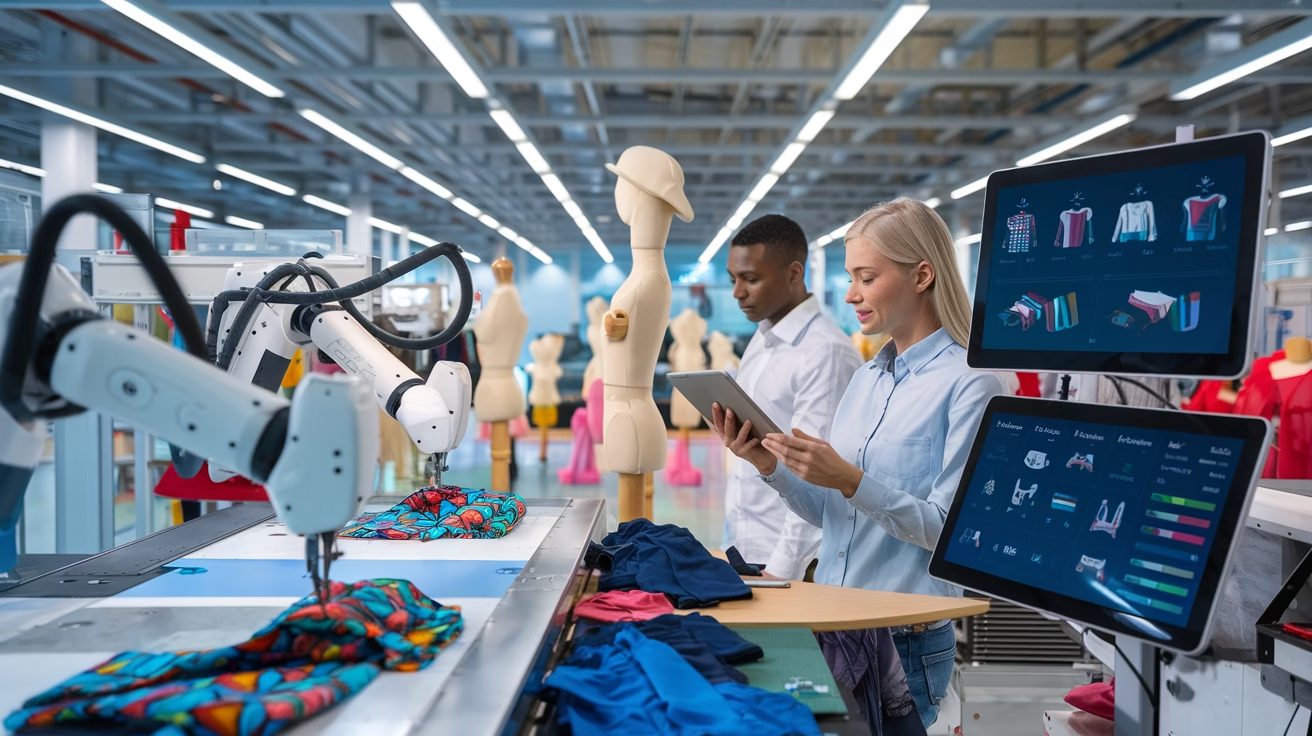
The AI Revolution in Children’s Apparel Manufacturing
Understanding AI and its relevance to kids’ clothing production
Artificial intelligence has emerged as a transformative force in children’s clothing manufacturing, addressing significant industry challenges including inefficient workflows, fabric waste, and production delays. In the rapidly evolving world of children’s fashion, AI technologies provide manufacturers with powerful tools to analyze market trends, predict consumer preferences, and optimize the entire production process. By leveraging algorithms and machine learning capabilities, children’s clothing manufacturers can create more responsive, efficient, and sustainable production systems that meet the demands of today’s market.
How AI-driven automation enhances accuracy and speed in cutting and sewing
One of the most significant advantages of AI implementation in children’s apparel manufacturing is the automation of cutting and sewing processes. AI-powered machines ensure unprecedented accuracy and consistency in these critical production stages. Advanced cutting machines guided by AI algorithms can optimize fabric layout, significantly reducing waste while maintaining precise specifications for each garment piece. This technology is particularly valuable for children’s clothing manufacturers who work with smaller pattern pieces and often need to accommodate special design elements for kids’ apparel.
Case studies demonstrate the effectiveness of this approach, with some sustainable children’s clothing manufacturers reducing fabric waste by up to 30% through AI-powered cutting machines. Similarly, AI-guided sewing operations maintain consistent stitch quality across production runs, eliminating the irregularities that often plague traditional manufacturing methods. These improvements not only enhance product quality but also accelerate production timelines, allowing children’s wear manufacturers to respond more quickly to market demands.
Quality control improvements through AI-powered defect detection
Quality control represents another area where AI is revolutionizing children’s apparel manufacturing. Traditional inspection methods often miss subtle defects, but AI-powered quality control systems can detect imperfections in real-time with remarkable precision. These systems use computer vision and machine learning to identify irregularities in fabric, stitching, and finished garments that might escape human inspection.
For children’s clothing manufacturers, this capability is invaluable as parents demand high-quality, durable garments that can withstand active wear and frequent washing. AI quality control ensures that each piece meets stringent standards before leaving the factory, reducing returns and enhancing brand reputation. The technology can identify issues ranging from color inconsistencies to stitching flaws, ensuring that only perfect garments reach young consumers.
With the foundation of AI implementation in children’s clothing production established, we’ll next explore how these technologies are specifically transforming the design process. In the following section on “AI-Powered Design Innovations for Kids’ Apparel,” we’ll examine how artificial intelligence is enhancing creativity, enabling personalization, and helping designers create collections that precisely align with children’s preferences and parents’ expectations.
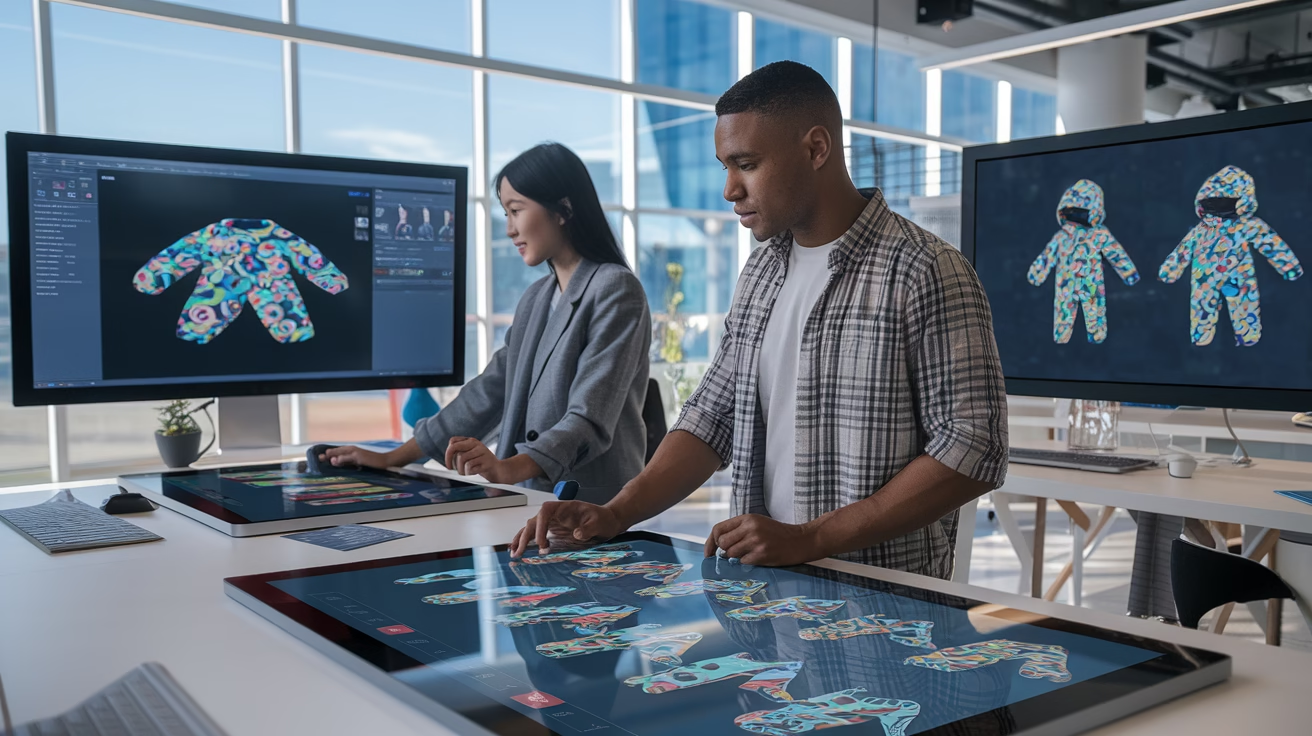
AI-Powered Design Innovations for Kids’ Apparel
Now that we’ve explored the AI revolution transforming children’s apparel manufacturing, let’s examine the specific design innovations that are reshaping how children’s clothing manufacturers approach product development.
Creating Trend-Aligned Patterns with Predictive Analytics
Children’s clothing manufacturers now leverage AI algorithms to analyze vast amounts of market data and consumer preferences, enabling predictive capabilities that identify emerging trends before they reach mainstream popularity. These sophisticated systems transform insights from multiple sources into actionable information that guides the entire design process. With AI-powered predictive analytics, children’s clothing manufacturers can create collections that precisely align with consumer expectations, significantly increasing market relevance and reducing the risk of producing unpopular designs.
The technology also identifies buying patterns across different demographics, allowing children’s clothing manufacturers to develop personalized designs that cater to individual tastes. This trend forecasting capability has revolutionized how designers approach seasonal collections, ensuring that new children’s apparel resonates with target consumers while maintaining brand identity.
Virtual Prototyping and 3D Modeling for Children’s Clothing
The adoption of 3D design tools has transformed prototyping processes for children’s clothing manufacturers. Virtual prototyping eliminates the need for multiple physical samples, allowing designers to visualize their creations dynamically and make adjustments in real-time. This technology enables children’s clothing manufacturers to streamline the development process, reducing time-to-market while improving design accuracy.
AI-generated fashion models are also revolutionizing kids’ fashion catalogs. Traditional photoshoots with child models require significant resources, parental consent, and adherence to strict working hour regulations. In contrast, digital models and 3D clothing design drastically reduce administrative burdens and the carbon footprint of children’s clothing manufacturers. Companies gain unlimited usage rights for AI-generated imagery without the legal constraints tied to real child models, enhancing eCommerce capabilities and marketing flexibility.
Enabling Mass Customization of Kids’ Garments
AI tools have made mass customization a reality for children’s clothing manufacturers. These technologies allow brands to tailor apparel to specific customer needs and preferences at scale, resulting in higher customer satisfaction and reduced returns. Virtual fitting rooms and AI-driven customization options personalize the shopping experience, elevating customer engagement while helping children’s clothing manufacturers better meet individual requirements.
This shift toward personalized clothing reflects an evolving business model in the industry that prioritizes consumer-centric strategies. AI expands designers’ creative capabilities by providing access to diverse inspirations and real-time trend analysis, allowing for bold experimentation while maintaining commercial viability.
With these AI-powered design innovations firmly established, children’s clothing manufacturers are now turning their attention to how these technologies can optimize production and supply chain operations, which we’ll explore in the next section.
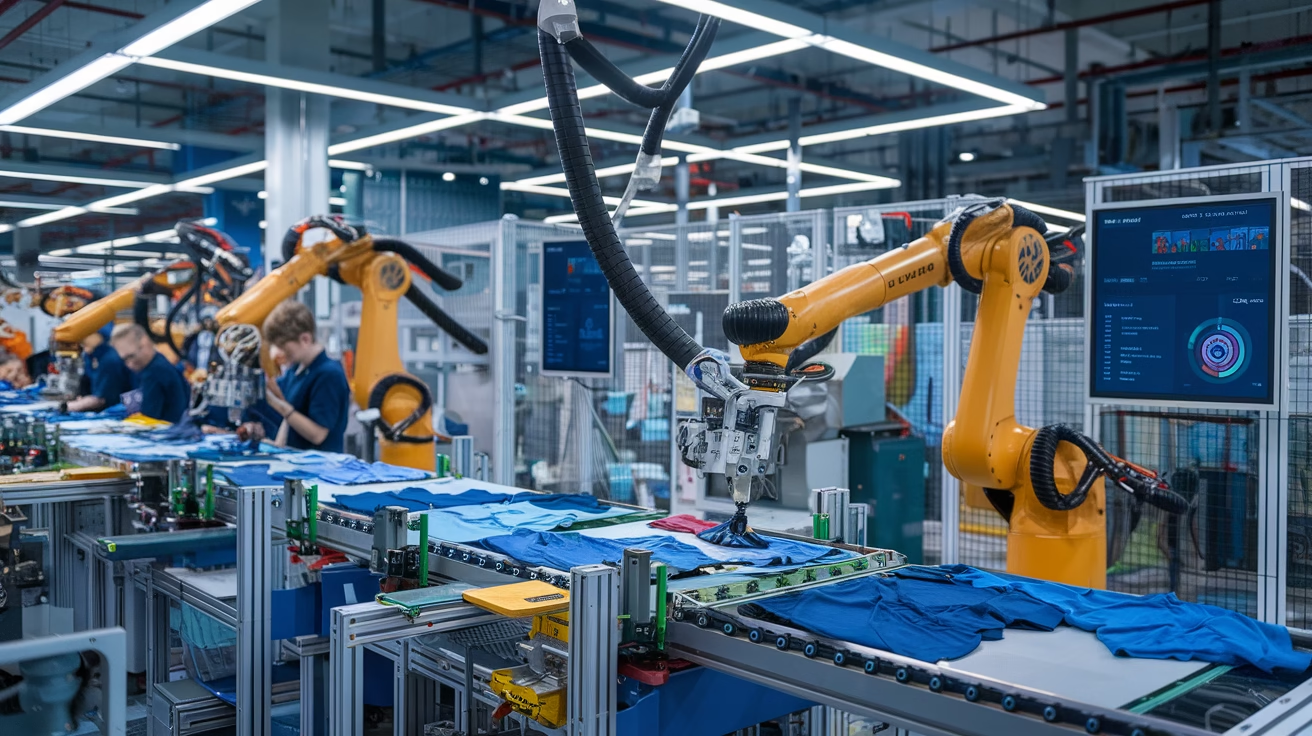
Optimizing Production and Supply Chain with AI
Now that we’ve explored how AI is revolutionizing design processes in kids’ apparel, let’s examine how artificial intelligence is transforming the production and supply chain aspects of children’s clothing manufacturing.
Smart inventory management and demand forecasting
AI technologies are addressing one of the most significant challenges in children’s apparel manufacturing: balancing inventory with market demand. Through advanced algorithms, manufacturers can now analyze historical sales data, seasonal trends, and market indicators to accurately predict demand patterns for kids’ clothing. This predictive capability helps prevent costly stockouts during peak seasons while also reducing the risk of overproduction and excess inventory.
AI-powered inventory management systems continuously monitor stock levels across distribution networks, automatically triggering reordering processes when supplies reach predetermined thresholds. For children’s apparel brands, this means maintaining optimal inventory levels of popular sizes and styles while minimizing capital tied up in excess stock.
Streamlining material acquisition and reducing waste
The reference to sustainability appears prominently in modern apparel manufacturing, and AI is playing a crucial role in making kids’ clothing production more eco-friendly. AI systems optimize fabric utilization during the cutting phase, significantly reducing waste materials. In fact, case studies show that sustainable brands have achieved up to 30% reduction in fabric waste by implementing AI-powered cutting machines.
AI also helps in material acquisition by analyzing supplier performance, material quality, and cost factors to recommend the most efficient sourcing strategies. This streamlined approach to material procurement ensures that children’s clothing manufacturers can maintain quality standards while minimizing waste throughout the production cycle.
AI-enabled smart warehousing for efficient order fulfillment
Smart warehousing represents another frontier where AI is transforming kids’ apparel manufacturing. AI-powered warehouse management systems optimize storage space, streamline picking routes, and coordinate fulfillment operations to ensure rapid and accurate order processing. These systems can prioritize orders based on various factors, including delivery deadlines and shipping distances.
For children’s clothing brands, particularly those with seasonal collections or school uniform lines, efficient order fulfillment is essential to meeting consumer expectations and maintaining market competitiveness. AI-enabled warehousing solutions facilitate faster turnaround times while reducing human error in the fulfillment process.
With these AI-driven supply chain optimizations in place, manufacturers are well-positioned to address the specific requirements of specialized product categories. Next, we’ll explore how these technologies are specifically being applied in the school uniform manufacturing sector, where consistency, durability, and timely delivery are paramount concerns.

AI Applications in School Uniform Manufacturing
Now that we’ve explored how AI optimizes production and supply chains, let’s examine how these technologies are specifically revolutionizing school uniform manufacturing, where consistency, quality, and personalization must coexist.
Automated Design and Production Processes for Standard Uniforms
Children’s clothing manufacturers are implementing AI-driven design platforms to streamline the creation of standard school uniforms. These systems automate repetitive tasks in the design process, allowing manufacturers to produce consistent uniforms at scale. Virtual prototyping tools enable children’s clothing manufacturers to visualize designs before production begins, reducing material waste and accelerating time-to-market.
AI-powered school uniform design systems analyze vast datasets of previous successful designs, identifying patterns that can be replicated and improved upon. This automation is particularly valuable for children’s clothing manufacturers who must produce large quantities of identical items while maintaining strict quality standards across multiple sizes and age ranges.
Personalization Options that Maintain School Identity
While standardization is essential for school uniforms, AI now enables children’s clothing manufacturers to offer personalization without compromising school identity. Using machine learning algorithms similar to those employed in e-commerce, manufacturers can provide options for customization that reflect individual preferences while adhering to school guidelines.
These AI systems utilize psychographic data and personal preferences to recommend appropriate sizing and optional features, enhancing student satisfaction with their uniforms. This personalization fosters school spirit and student identity while maintaining the cohesive look required by educational institutions. Smart manufacturing for children’s wear now includes the ability to efficiently produce small batches of customized items alongside standard production runs.
Improving Durability and Quality Through AI Quality Control
AI-driven quality control systems have transformed how children’s clothing manufacturers ensure uniform durability. Predictive systems identify potential defects before they occur, while automated inspection tools catch imperfections that might be missed by human inspectors.
These quality control mechanisms are particularly important for school uniforms, which must withstand rigorous daily wear. AI algorithms analyze fabric performance data to optimize material selection and construction techniques, resulting in longer-lasting garments. Children’s clothing manufacturers implementing these systems report significant reductions in return rates and increased customer satisfaction.
By incorporating machine learning in children’s clothing design and production, manufacturers can predict potential failure points in uniforms and address them proactively. This not only improves product quality but also contributes to sustainability by reducing the frequency of replacement—a benefit we’ll explore further in the next section on sustainability benefits of AI in kids’ apparel.
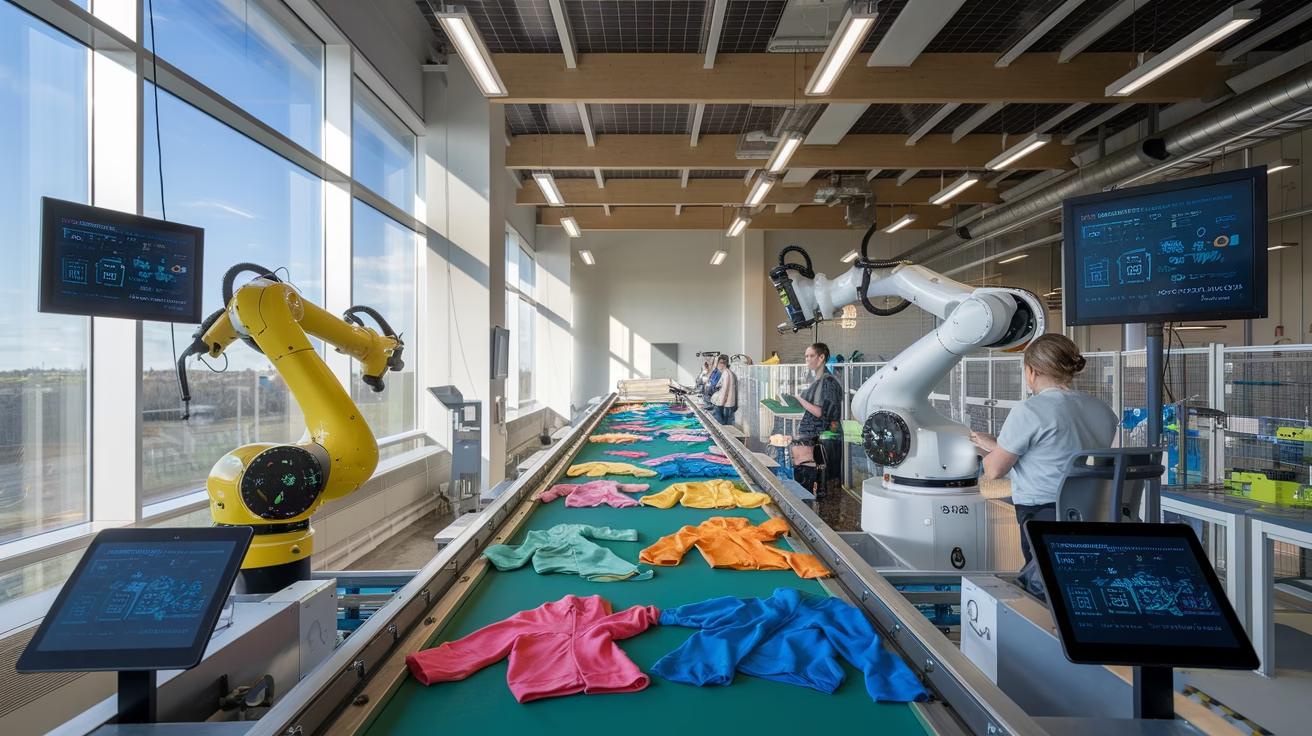
Sustainability Benefits of AI in Kids’ Apparel
Now that we’ve explored how AI is revolutionizing school uniform manufacturing, let’s examine the significant sustainability advantages that AI brings to the children’s clothing manufacturing industry as a whole.
A. Reducing overproduction through accurate demand prediction
Children’s clothing manufacturers are embracing AI-powered predictive analytics to tackle one of the industry’s biggest environmental challenges: overproduction. By analyzing historical sales data and consumer behavior patterns, AI systems help kids’ apparel manufacturers like H&M accurately forecast demand for different styles, sizes, and seasonal collections.
This technology enables children’s clothing manufacturers to align production volumes with real-time market demand, significantly reducing the quantity of unsold items that would otherwise end up in landfills. For sustainable children’s clothing production, this precision is invaluable, as it minimizes resource consumption while maintaining profitability.
B. Minimizing material waste in the cutting and production process
AI-driven automation is transforming production processes for children’s wear manufacturers by optimizing fabric cutting and assembly techniques. Smart manufacturing for children’s wear now includes:
-
AI systems that calculate the most efficient fabric layouts before cutting
-
Machine learning algorithms that identify optimal material usage patterns
-
Automated cutting systems that reduce human error and material waste
Children’s clothing manufacturers implementing these AI textile optimization technologies report significant reductions in fabric waste while maintaining high-quality production standards. Additionally, 3D prototyping and virtual sampling powered by AI allow manufacturers to design and test children’s garments without producing physical samples, further reducing material waste in the development phase.
C. Blockchain integration for supply chain transparency
AI technologies combined with blockchain are creating unprecedented transparency in the children’s clothing supply chain. This integration allows eco-friendly kids clothing technology to track raw materials from source to final product, ensuring ethical sourcing practices.
Children’s clothing manufacturers like Taian Lianchuang Textile Co., Ltd are leveraging these technologies to:
-
Verify sustainable material sourcing claims
-
Provide consumers with detailed information about product origins
-
Identify inefficiencies in transportation to reduce carbon footprints
-
Ensure compliance with environmental and labor standards
This transparency empowers consumers to make informed purchasing decisions while helping children’s apparel manufacturers demonstrate their commitment to sustainability through verifiable data rather than vague claims.
As the industry continues to evolve, these sustainability benefits will become increasingly crucial. With this understanding of AI’s positive environmental impact, we’ll next explore the challenges manufacturers face when implementing these advanced technologies in children’s apparel production.

Addressing Challenges in AI Implementation
Now that we’ve explored the sustainability benefits of AI in kids’ apparel, it’s important to acknowledge the hurdles children’s clothing manufacturers face when implementing these technologies. While AI offers tremendous potential, several challenges must be addressed to fully realize its benefits in the children’s apparel industry.
Balancing Automation with Human Craftsmanship
Children’s clothing manufacturers must strike a delicate balance between AI automation and human expertise. The reference to “garbage in, garbage out” principles applies particularly to kids’ apparel production, where even the most advanced AI systems fail without quality data inputs. Leading children’s clothing manufacturers are adopting hybrid approaches that combine:
-
AI-assisted design processes with human oversight
-
Automated production planning with craftsman quality checks
-
Machine-driven supply chain optimization with human decision-making
This balanced approach ensures that while children’s clothing manufacturers leverage AI for efficiency, the human elements of creativity and quality craftsmanship remain intact, particularly important in premium children’s wear where attention to detail is paramount.
Ethical Considerations in Algorithm Development and Data Privacy
For children’s clothing manufacturers, ethical AI implementation presents unique challenges:
-
Data privacy concerns: Companies collect extensive consumer data to stay competitive, but must navigate strict privacy regulations, especially when the data relates to children.
-
Intellectual property considerations: The fashion industry heavily relies on IP protection, with unauthorized reproduction of designs through AI-generated outputs becoming a growing concern for children’s clothing manufacturers.
-
Algorithmic bias: AI systems can perpetuate or amplify biases if not carefully designed and monitored.
Children’s clothing manufacturers must implement privacy-centric strategies and educate staff on privacy regulations specific to children’s data. Additionally, establishing clear ethical guidelines for AI use in design processes helps protect both the brand and its young consumers.
Preparing the Workforce for AI Collaboration in Kids’ Apparel Production
The transition to AI-enhanced production systems requires significant workforce adaptation. Smart children’s clothing manufacturers are:
-
Developing flexible attribute taxonomies that adapt to changing trends in children’s fashion
-
Implementing robust data governance frameworks to maintain data quality
-
Investing in training programs to upskill employees on AI collaboration
Children’s clothing manufacturers that successfully address these workforce challenges report significant gains, including increased revenue, reduced unsold inventory, and enhanced customer satisfaction through better product offerings.
For sustainable growth, children’s clothing manufacturers must view AI implementation not as a replacement for human talent but as a complementary tool that enhances the skills and capabilities of their workforce, ultimately leading to superior children’s apparel products.
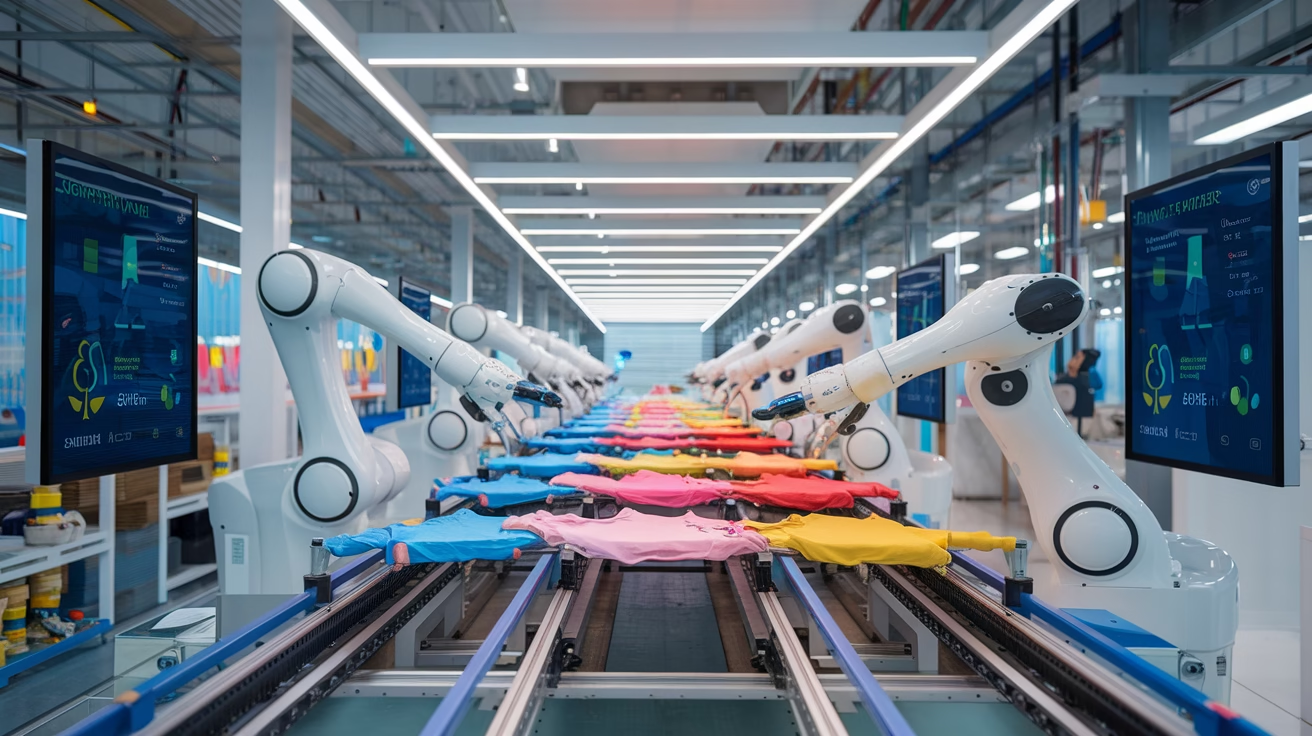
Conclusion
The AI revolution in children’s clothing manufacturing represents a pivotal shift in how the industry operates, from design innovation to production optimization. Children’s clothing manufacturers now leverage AI-powered systems to create trend-aligned designs, automate cutting and sewing processes, and implement real-time quality control—all while enhancing sustainability through reduced waste and optimized resource utilization. For school uniform manufacturers specifically, AI enables unprecedented levels of customization and efficiency, allowing them to better serve educational institutions with personalized options that foster student identity.
As we look toward the future, children’s clothing manufacturers that embrace AI technologies will likely gain competitive advantages through mass personalization capabilities and improved supply chain transparency. While challenges in implementation remain, the benefits of increased productivity, enhanced decision-making, and sustainable practices make AI integration worthwhile for forward-thinking children’s clothing manufacturers. By responsibly adopting these technologies, the children’s apparel industry can create a more efficient, creative, and environmentally conscious manufacturing ecosystem that better serves the needs of young consumers and their families.
Petelulu is Your Best Partner for Starting Your Kids’ Clothing Line
If you’re looking for a reliable clothing manufacturer for your children’s clothing line, Appareify will be your top choice. Here is why we can relieve stress for your kids’ clothing business:
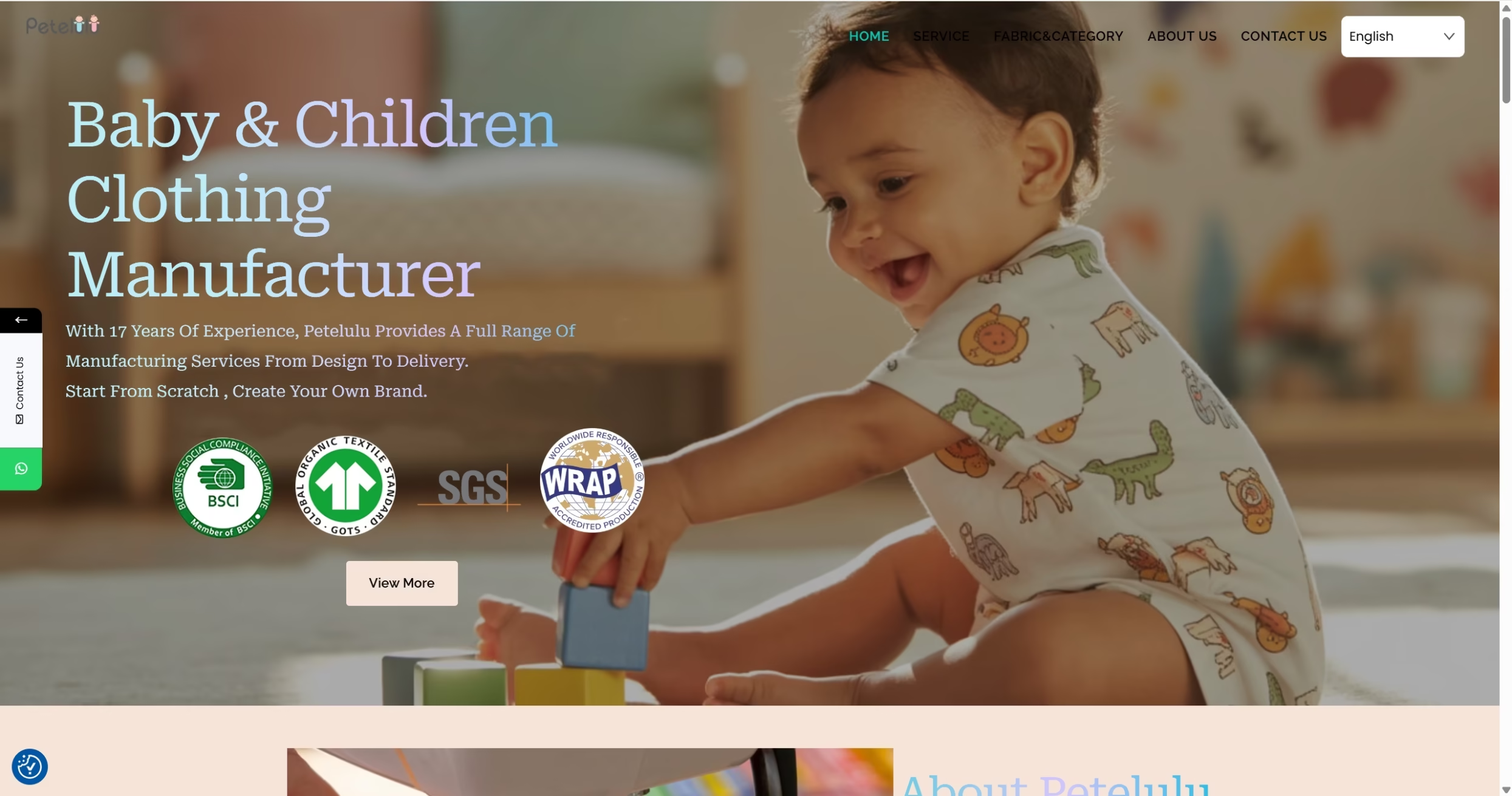
Custom Children’s Clothing Manufacturer
Appareify is a leading clothing manufacturer that has assisted many businesses with their own range of bespoke clothing. We can create children’s clothing tailored for your style and material needs
Experienced Production & Team
Partner with Appareify and benefit from our years of clothing manufacturing expertise. Our professional design and production experts can easily turn your business ideas into reality.
Sustainable Commitment
We use biodegradable materials and fabrics to turn your ideas into reality sustainably. You’ll get children’s clothing that is friendly to the environment.